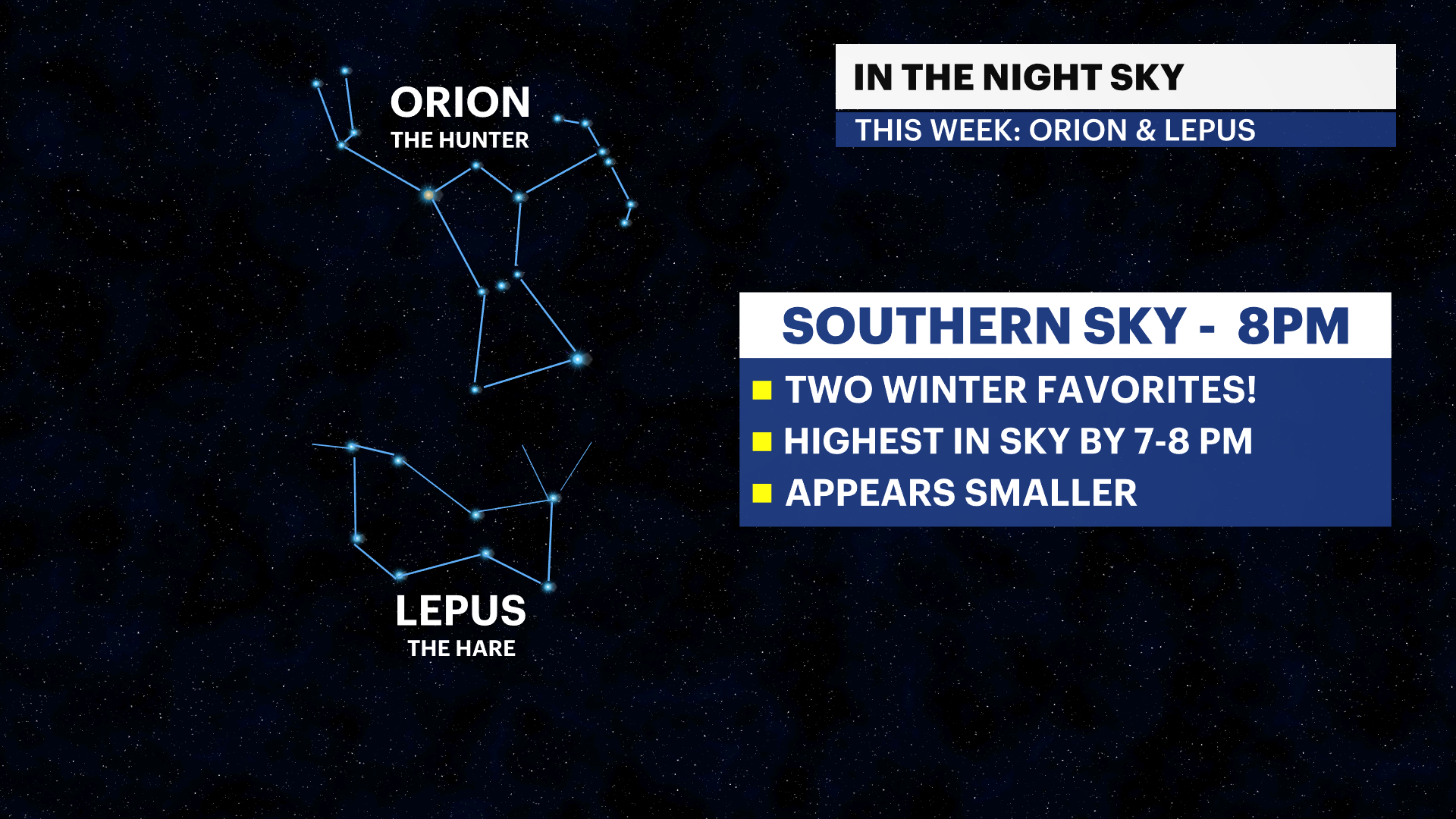More Stories
Jupiter and Venus Conjunction
Have you noticed two bright “stars” in the western sky just after sunset? Well, those aren’t stars, but two of the brightest planets seen from Earth - Venus and Jupiter.
Venus ranks as the third brightest natural object in the sky after the sun and moon. Those who are interested in the night sky can watch the planets get closer each evening. They will be closest in the evening sky on March. 1. This is known as a conjunction.
On Tuesday and Wednesday night, the crescent moon will join in on the fun. After March 1, the two planets will appear to slide past each other and separate again. Venus will continue to shine bright in the evening until August, while Jupiter will stay visible only through March.
Let’s hope for some clear nights ahead. Currently, Jupiter shines at a bright -2.1 magnitude, but it’s Venus that steals the show with -4.0 magnitude. You can’t miss them!

Orion and Lepus
One of the most recognizable constellations in the winter sky is Orion. It’s easy to see from just about anywhere in the tri-state area, even with some light pollution. The constellation contains three bright stars that make up the hunter’s identifiable belt, along with two very bright stars on either side of his belt – Betelgeuse and Rigel.
Orion is now standing highest in the early evening sky, a sign that winter is fleeting, as we are past the halfway point. The constellation appears smaller than it did when it was closer to the horizon. Just like the full moon, that’s just an illusion.
Beneath Orion’s feet is the constellation Lepus the Hare. Lepus is a little harder to see locally. If there is a dark, open sky, you may be able to identify that constellation as well.

More from News 12
1:46

Teen arrested after knifepoint robbery at Co-op City cellphone store; manager says she feared for her life
1:18

Dry weather continues before rain dampens weekend in The Bronx
0:45

Violent gunpoint robbery in Morrisania terrifies workers, $5,000 reward offered for information
2:19

'We are hiring them to stand up for tenants.' Mamdani stands by his tenant advocate pick
1:45

GameStop closing stores across New York City
0:46
